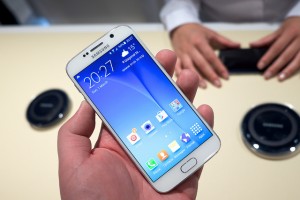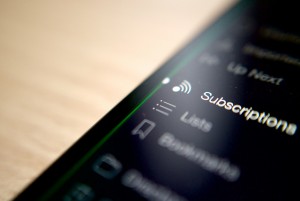It is not enough to merely have a mobile app for your business. Just as with your web site and other aspects of your business, you want your mobile applications to get results.
One of the key metrics of success with mobile applications is “stickiness” and according to a recent study by Localytics, stickiness is improving for apps across the board due to improvements in engagement.
App stickiness is the average of the percent of frequent users and the percent of users who return within three months after using the app. According to Raj Aggarwal, CEO of Localytics, “app engagement is at an all-time high and is likely to only continue increasing.”
But how do you increase stickiness for your application?
Place a Premium on User Experience

Place a Premium on User Experience | Photo: Kārlis Dambrāns (Flickr)
Key to mobile application stickiness is its user experience. Since mobile devices are smaller, applications have less screen to work with and space is at a premium. When you combine smaller screens with the fact that app users usually download applications on impulse, user interfaces become even more important.
Make sure you don’t rush the design phase of your project and don’t be afraid to contact a mobile user interface specialist that can help you get the results you want. Minimalistic UI design works well in the mobile environment and is what end users expect in 2015. Resist the urges to add irrelevant 3D images with textures, shadows and beveled edges, rather, follow what works and suggest a minimal UI design to your mobile application developer.
Today’s mobile users want apps that are easy to use and not packed with clutter on the screens. Beyond being easier to use, minimal design makes content easier for users to read and retain.
But simple, intuitive design on its own is not a guarantee for success.
Have a Strategy to Engage Your Users
One of the best ways to do that is to give them a little reminder that your application is there once in a while. Push notifications are a perfect way to do this and if you pay attention you will see that successful apps focus on engagement strategies utilizing tools such as personalized push messaging.
It’s no surprise why so many successful apps use this tool. On mobile applications where users enable push notifications there are an average of 88% more launches than by the users who disable push notifications (Localytics). Additionally, a very solid 62% of users who enable push notifications return to the app the month after installation if messaged (compared with 32% for users who have disabled notifications).
When it comes to push notifications, you want to take the time to craft your messages so your users will find them valuable. How often you send them out will depend on your audience and applications purpose, but be careful not to send them out too often or for no good reason or you will find your users will uninstall your app.
Create Engaging Content
While users are within your application, engaging content is an important aspect of not only developing a following but creating more regular usage of your app. Engaging content can draw your users in.
When developing a content strategy for your application, remember that the goal is to match the right message to your visitor’s intent while simultaneously meeting your business goals. From there it is important to consider the smaller format of mobile devices and usage patterns of your customers.
People like to digest mobile content in nice easy, bite-size pieces. Research has shown that people tend to be task oriented on their mobile phones. Keep this in mind as you format your content. Make it easy on your visitor’s by using big fonts that are easy to read. You will also want to give your audience the most important pieces of information first and use bullet points and sub-headers so they can scan your content.
Finally don’t be afraid to use plain language. Most businesses are shifting to a conversational tone for their mobile communications. A conversational tone is simply writing like you speak. Keep your sentences short and work in those action verbs and you will find audiences more likely to engage.
Photo: http://bit.ly/1FvxurK





